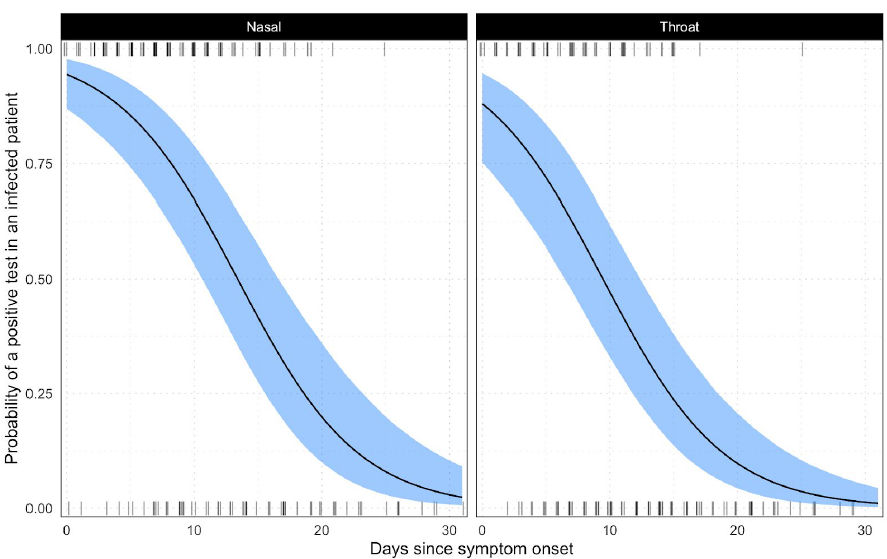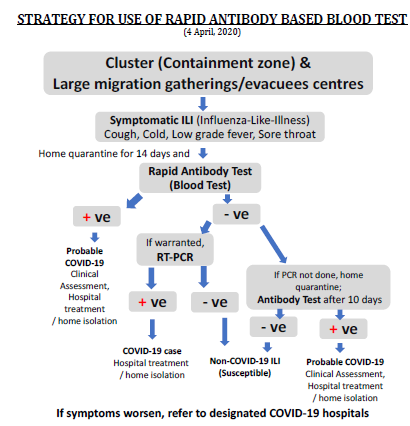1/n Bayes + Covid
This is a good thread on the topic ... and I would like to build upon this.
There are MANY MANY micro-policy implications.
TL;DR ICMR has done a v decent job. Pls read on... https://twitter.com/karthiks/status/1250362089585033216">https://twitter.com/karthiks/...
This is a good thread on the topic ... and I would like to build upon this.
There are MANY MANY micro-policy implications.
TL;DR ICMR has done a v decent job. Pls read on... https://twitter.com/karthiks/status/1250362089585033216">https://twitter.com/karthiks/...
2/n Karthik has been gentle with his illustration. Here is a more counterintuitive one from Eliezer Y
Assume 1% of women at 40 have breast cancer
80% with cancer will test +ve
9.6% without cancer will also test +ve
Prob of cancer if test is+ve is 7.8%!! (8/104)
This is SERIOUS
Assume 1% of women at 40 have breast cancer
80% with cancer will test +ve
9.6% without cancer will also test +ve
Prob of cancer if test is+ve is 7.8%!! (8/104)
This is SERIOUS
3/n OK so what is it for Covid? There are 3 type of tests
(a) RT-PCR on throat/nasal swab
(b) antibody on blood sample
(c) antigen (ignore for now)
What we "broadly" know: RT-PCR has v v low false positive. BUT it can have high false negative (even 30%+). https://www.medrxiv.org/content/10.1101/2020.04.05.20053355v2">https://www.medrxiv.org/content/1...
(a) RT-PCR on throat/nasal swab
(b) antibody on blood sample
(c) antigen (ignore for now)
What we "broadly" know: RT-PCR has v v low false positive. BUT it can have high false negative (even 30%+). https://www.medrxiv.org/content/10.1101/2020.04.05.20053355v2">https://www.medrxiv.org/content/1...
Why such high false -ve? Because "amount of virus in a swab is likely to vary between patients, sample location (nasal, throat or sputum) and through time as infection progresses".
Chart shows throat swabs do worse. #Days since symptoms drastically reduces +ve result in the test
Chart shows throat swabs do worse. #Days since symptoms drastically reduces +ve result in the test
High false -ve is a CRUCIAL factor and has many policy implications:
- everyone has undercounted
- why an actress is tested many times
- discharge protocol has atleast 2 negative tests
- why Hong Kong quarantines every suspect even when they test negative or even without testing
- everyone has undercounted
- why an actress is tested many times
- discharge protocol has atleast 2 negative tests
- why Hong Kong quarantines every suspect even when they test negative or even without testing
Let& #39;s plug RT-PCR into Bayes.
#1: Assume widespread testing implying Prob of infection say 1%. Low false +ve (say 1%), high false neg (say 30%)
#2: more thoughtful testing of those with symptoms, known contact increase prior prob of infection to say 35%
#2 is >2x more accurate
#1: Assume widespread testing implying Prob of infection say 1%. Low false +ve (say 1%), high false neg (say 30%)
#2: more thoughtful testing of those with symptoms, known contact increase prior prob of infection to say 35%
#2 is >2x more accurate
Infact, if the patient has symptoms & known contacts, the US CDC almost says that negative results do not add any useful information (high error rate). Many US hospitals dont even & #39;waste tests& #39; on patients like this. These patients are asked to self-isolate asap
The real problem statement is - how do we get a asymptomatic/pre-symptomatic individuals to not spread the disease without shutting the economy in the context of a test with high false negative?
Testing indiscriminately is not the right answer even before considering resources
Testing indiscriminately is not the right answer even before considering resources
Testing aggressively for *high probability group* is still useful. Korea tests self reports.
Close contacts can be home isolated even without testing (HK/SG do this, the contact tracing app will be game changer).
Everyone wearing masks can have disproportionately +ve outcome
Close contacts can be home isolated even without testing (HK/SG do this, the contact tracing app will be game changer).
Everyone wearing masks can have disproportionately +ve outcome
Let& #39;s move on to the "antibody passport" test, the great hope. Self-reported numbers from 2 vendors (note regulator verified nos could be diff)
#1 Celex 6.2% false -ve and 4% false +ve ( https://www.fda.gov/media/136625/download)
#2">https://www.fda.gov/media/136... Biolidics 8.5% false -ve and 3% false +ve https://www.biolidics.com/2019-ncov-igg-igm-antibody-detection-kit">https://www.biolidics.com/2019-ncov...
#1 Celex 6.2% false -ve and 4% false +ve ( https://www.fda.gov/media/136625/download)
#2">https://www.fda.gov/media/136... Biolidics 8.5% false -ve and 3% false +ve https://www.biolidics.com/2019-ncov-igg-igm-antibody-detection-kit">https://www.biolidics.com/2019-ncov...
Lets run Bayes on Celex. Assume prior infection rate of 1% (reasonable, as we do want to do this widespread)
Celex still gives 19% prob of disease given +ve result. If prior pop is 10% infected, test gives 72% prob of disease.
Celex still gives 19% prob of disease given +ve result. If prior pop is 10% infected, test gives 72% prob of disease.
This is important. It means that early stage of disease rolling even a slightly imperfect antibody test out doesnt make sense.
Some vendors claim v high specificity (low false +). See product A and B. They give hope but its CRUCIAL for authorities to get this procurement right
Some vendors claim v high specificity (low false +). See product A and B. They give hope but its CRUCIAL for authorities to get this procurement right
This chart from ICMR is super Bayesian. Conditional probability increases with each step.
On the bottom right, see how careful they are of false -ves in RT-PCR.
Antibody tests yield results only after certain days post symptom so ICMR is careful of treating false -ve from those
On the bottom right, see how careful they are of false -ves in RT-PCR.
Antibody tests yield results only after certain days post symptom so ICMR is careful of treating false -ve from those
n/n SUMMARY
- India& #39;s ICMR has a robust test strategy (thank you!).
- RT-PCR has high false -ve.
- Huge nuance is needed on where/how to best use testing resources. At times quarantine w/o test maybe ok.
- Antibody test need to pass high bar on specificity before being useful
- India& #39;s ICMR has a robust test strategy (thank you!).
- RT-PCR has high false -ve.
- Huge nuance is needed on where/how to best use testing resources. At times quarantine w/o test maybe ok.
- Antibody test need to pass high bar on specificity before being useful
Disclaimer: I may be missing something. Pls do let me know if there is any error or if you would like to add something. We are all figuring this out!
I also glossed over some concepts for brevity but happy to explain.
I also glossed over some concepts for brevity but happy to explain.

 Read on Twitter
Read on Twitter








